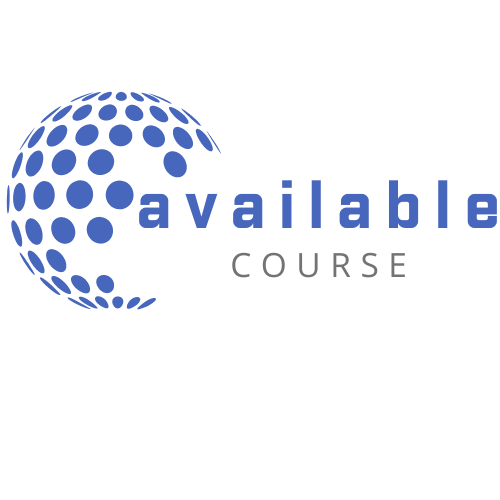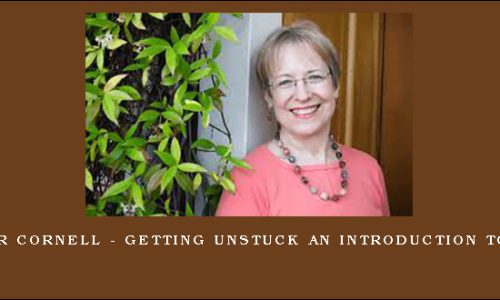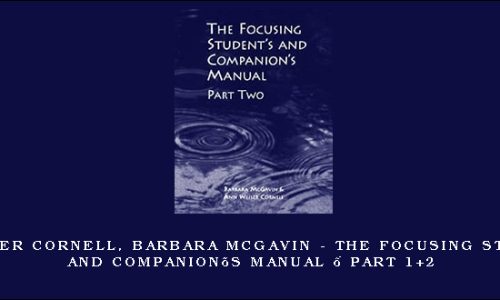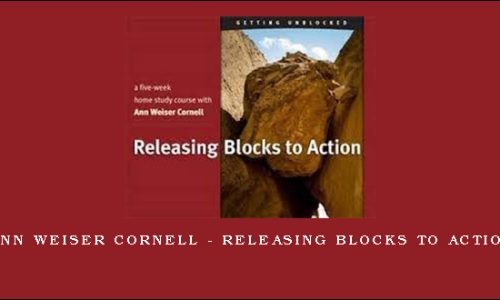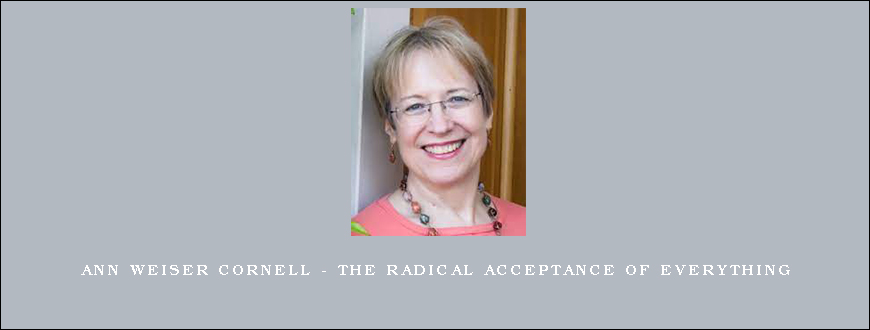
Ann Weiser Cornell – The Radical Acceptance of Everything

Download Ann Weiser Cornell – The Radical Acceptance of Everything on Avaicourse.com
This course is available immediately. Please contact us at avaicourse17@gmail.com with the best service for more detailed advice.
Description:
This article originally appeared in the November 1994 issue of The Focusing Connection.
When we do Focusing as traditionally taught, it is as if we are inhabiting two worlds. In one world, we have absolute trust for the body and the body’s process. In the other world, we treat some experiences as acceptable, and others as unacceptable, needing to be set aside or excluded in order for the process to continue. In this second world the inner critic is treated as an interruption, as are thoughts. Felt senses may only come in the trunk area of the body, and chronic physical symptoms are not considered to be felt senses.
For the past several years I have been aware that my experience goes counter to this traditional teaching. For example, I have found that felt senses may come outside the “classic” Focusing area of throat, chest, belly. I have found that compassion for the critic may be more useful than setting the critic aside. But recently there has been a new synthesis in my practice of Focusing, both in myself and as a teacher. Many seemingly disparate threads have revealed themselves to be, really, one cloth. The name that I would give to this new understanding is “the radical acceptance of everything.”
What if we approach the teaching and practice of Focusing with a fresh and open mind? What if we let go of the various strategies and techniques we have been taught, and simply begin with three essential statements?
(1) Focusing is spending time with something that is not yet clear, something that has more to it than can be put into words at first.
(2) There is a bodily process that is more than the physical body as narrowly defined.
(3) The bodily process is trustworthy.
If you are someone who believes that Focusing can be defined by any number of steps (“Focusing is a ___ step process.”) or that Clearing a Space is a necessary part of every Focusing process, then you probably won’t be willing to follow me along this road. I propose we start by agreeing that there is an essence to Focusing that is beyond steps, and beyond any particular step, except perhaps the step of Being With What’s There.
So if we start with the essence of Focusing as captured in those three statements, and clear everything else away, what follows? Let’s see.
Felt Senses Outside the Trunk Area.
I was taught to guide a person’s awareness into the trunk — throat, chest, and belly — and if they felt something outside that area, to ask them to notice what they felt in the trunk about that. For example, “You might notice if you’re feeling something in your throat, chest, stomach area that goes with that ache in your jaw.” And of course there are other ways of phrasing this. But the traditional wisdom was either (1) felt senses come only in the trunk, or, more kindly, (2) felt senses may come elsewhere, but when felt in the trunk they communicate with the focuser more easily.
When Leonardo da Vinci was a boy, he was told that a nail placed in a tree would grow taller every year as the tree grew. Everyone knew that this was so. He tried it, and he found that it was not so; trees in fact grow from the top, and a nail placed at a certain height will never grow higher.
When I tried treated senses in the periphery of the body as if they were felt senses, both with myself and with others, they behaved like felt senses. They “made steps,” opened, revealed meaning, and attending to them eventually resulted in felt shifts.
If the bodily process is trustworthy, then perhaps it offers felt senses precisely in the area of the body where it most wants them to be felt. To make the sense move first, before it can be attended to, feels not respectful of the body’s wisdom.
Physical Symptoms as Felt Senses.
I was taught that physical symptoms cannot be felt senses, and that if a person had a physical symptom, they might be able to feel their feeling about having it, but that was the most that Focusing could do. Then I started hearing about people who didn’t follow “the rules” and who got amazing results from treating physical symptoms as felt senses. I published two of these accounts in this newsletter: Joe Tein’s “Focusing with Pain,” (The Focusing Connection September 1986) and Shirley Marten’s “And Then the Pain Went Away,” (The Focusing Connection September 1987).
Then in 1990 I had a chance to try this myself. It was the night before I was to start teaching a five-day workshop at the Omega Institute with Kevin McEvenue, and he had joined me to trade Focusing. I was depressed because I had a sore throat, a familiar symptom which always led to a cold, and I didn’t want to have a cold. I told this to Kevin and he, another non-rule follower, said cheerfully, “Let’s focus on it!” When treated as a felt sense, the sore throat yielded meaning, something about how I was putting pressure on myself to be an “expert.” By the next morning, the sore throat was gone, and I felt fine. No cold.
Last month in England I tried this again, on a cold that had a
Internet Marketing Course
Digital marketing is the component of marketing that utilizes internet and online based digital technologies such as desktop computers,
mobile phones and other digital media and platforms to promote products and services. Its development during the 1990s and 2000s,
changed the way brands and businesses use technology for marketing. As digital platforms became increasingly incorporated into marketing plans and everyday life,
and as people increasingly use digital devices instead of visiting physical shops, digital marketing campaigns have become prevalent,
employing combinations of search engine optimization (SEO), search engine marketing (SEM), content marketing, influencer marketing, content automation,
campaign marketing, data-driven marketing, e-commerce marketing, social media marketing, social media optimization, e-mail direct marketing, display advertising,
e–books, and optical disks and games have become commonplace. Digital marketing extends to non-Internet channels that provide digital media, such as television,
mobile phones (SMS and MMS), callback, and on-hold mobile ring tones. The extension to non-Internet channels differentiates digital marketing from online marketing.
More Course: INTERNET MARKETING
Outstanding Course:Anthony Robbins – Breakthrough Challenges
Course Features
- Lectures 0
- Quizzes 0
- Duration 50 hours
- Skill level All levels
- Language English
- Students 0
- Assessments Yes
